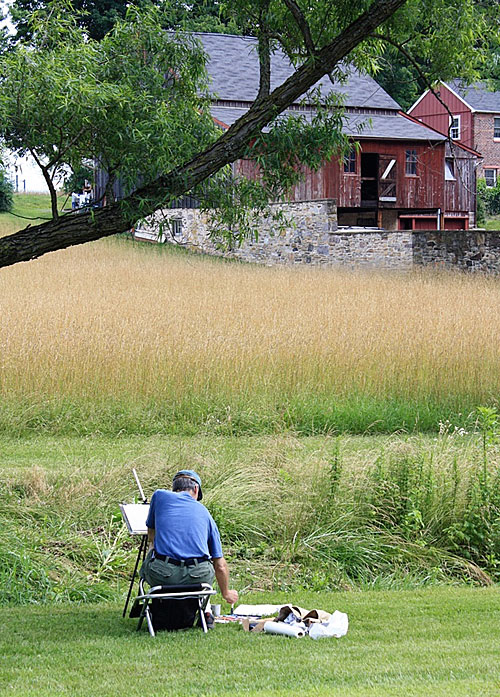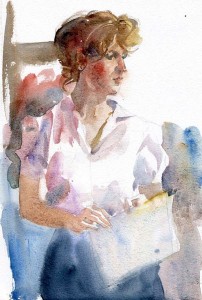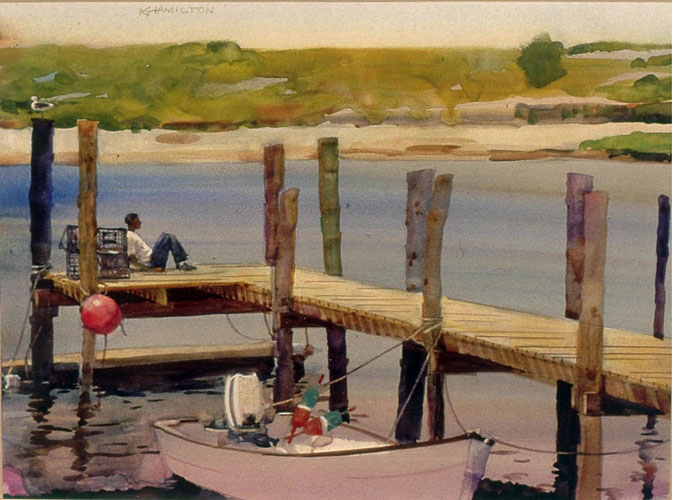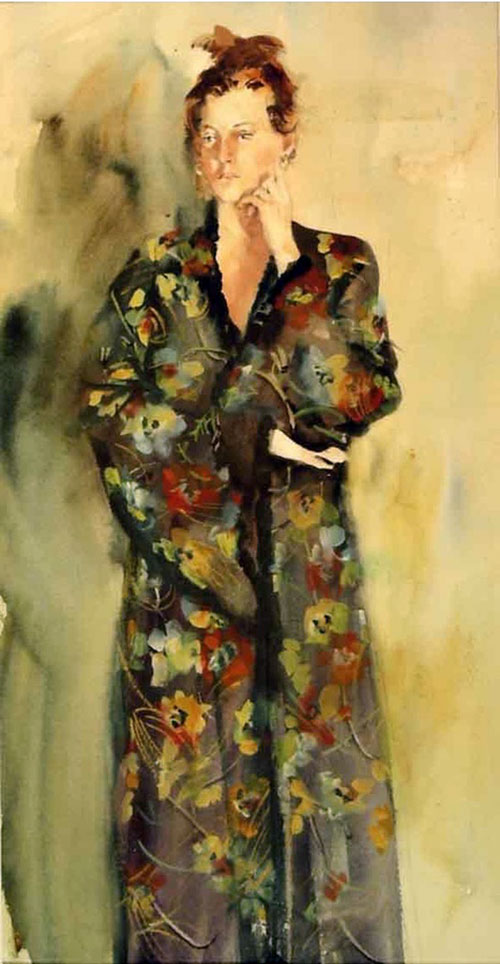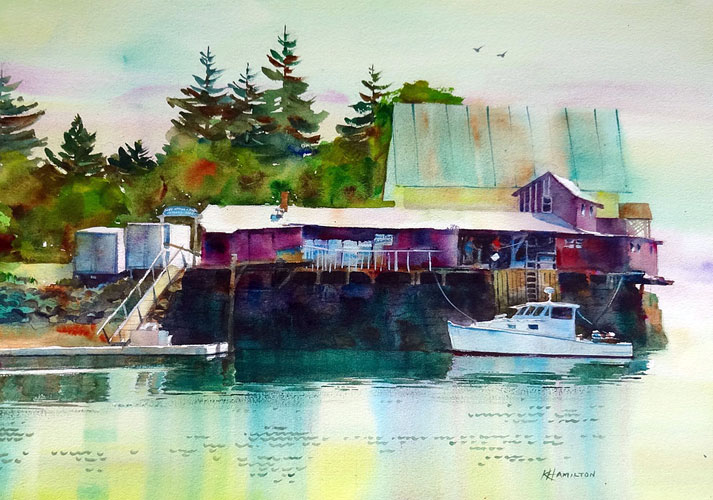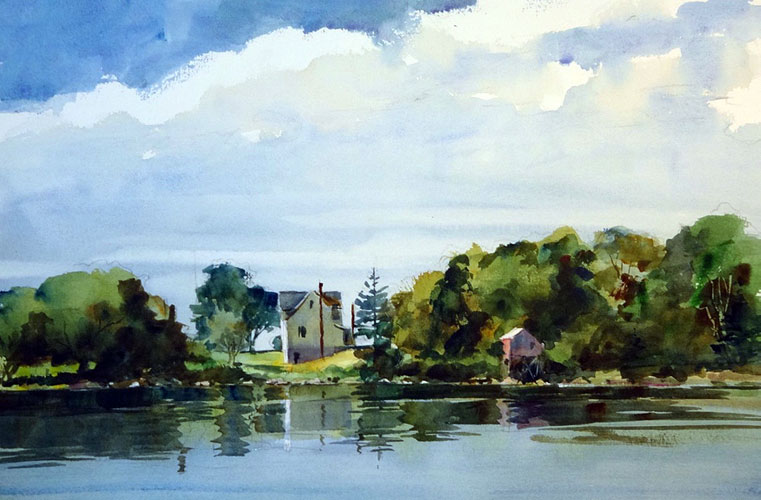Art, // February 15, 2016
Ken C. Hamilton — ARTIST
Interview with artist Ken C. Hamilton —
1. Who are you and what do you do?
My name is Ken C. Hamilton. Originally from the Northwest, I am an artist living and working in West Orange, New Jersey.
2. Why Art?
Art is one area where the expression of an idea or interpretation of a subject is unique to oneself. The creative process is always gratifying and a constant source of fascination. It is something I want to do for the rest of my life.
3. What is your earliest memory of wanting to be an artist?
I felt an affinity for art at an early age receiving the attention of my school teachers and friends who wanted me to draw something for them. My father was an accomplished artist though he ran a separate business as it was a field people didn’t take seriously in our town. When he worked on a commissioned painting, I would often look over his shoulder. Enrolled in college and taking a variety of art courses, it wasn’t until I saw the work of a guest speaker and felt the impact it had on me that I thought – This is what I want to do!
4. What are your favorite subject(s) and media(s)?
I generally like scenes that show some sign, such as a structure, from the apparent hand of man. Not only will it say something of the time and place, but add an area of interest and geometry within the composition. Waterfront is also a favorite for its’ meditative, serene quality and figurative for portraying gesture and attitude in capturing character. Watercolor offers the ability for pigments to intermingle after applying washes and it has a relative ease to put something down shorthand. On the other hand I like oil for building up texture and re-working areas – a medium I plan on returning to.
5. How do you work and approach your subject?
Besides getting familiar with the subject (figurative or objects), I want to vary my approach to paint from dark to light or light to dark. I try to find a unique point of view that best describes the subject and makes for an interesting composition. As the light source and time of day affects the mood I’ll also do a pencil value study and maybe take a reference shot. Finally I want to maintain my focus in what I found was initially inspiring and compelling in completing the work.
6. What are your favorite art work(s), artist(s)?
It is difficult to narrow down. I think John Singer Sargent raised the bar for virtuosity with his economy of brushwork and James McNeill Whistler for sophisticated simplicity. Other artists I admire for their great styles would include; Edgar Degas, Toulouse Lautrec, Winslow Homer, J.M.W. Turner, and Gustav Klimt. For more abstraction I like Richard Diebenkorn, Larry Rivers, Henry Matisse, and Mark English. I’ve always appreciated Robert Henri philosophically in his writing, for his artist movement and some of the gusto they showed.
7. What are some of the best responses you have had to your work?
Some years ago my family and I stayed at a Pennsylvania B&B farm for the weekend. During the stay I did a plein air painting of a curious looking tobacco wagon on an old truck chassis their son had built. The farmer and his wife loved it and acquired it for our stay. It meant a lot to them as the experience there meant to us.
Another time I worked on a painting of a subject I hadn’t done that much of. It did not progress the way I had hoped and I put in in a drawer. A year later I came across it again with fresh eyes and decided to frame it. The painting ended up being accepted at a couple of notable exhibits nationally and won awards. There are times you might be your own worst critic – you never know.
The best was being asked by special invitation to exhibit at an International Exhibition in China and have the Qingdao Art Museum purchase one of my works for their permanent collection.
8. What do you like about your work?
I had worked for a number of years as an illustrator, which was about collaborating on other people’s ideas. While developing fine art since the 90’s, I enjoy the sense of liberation as I pursue my own ideas bringing to the viewer imagery on a more personal level. In my approach I avoid using formulas and instead work as a journey where I can explore the possibilities while making that connection with the audience. I find this most fulfilling.
9. What advice would you give to other artists?
Artists can discover great growth and inspiration with one another as they find harmony through their creativity with the love of the craft. It is important as you continue to practice your art to meet on a regular basis with a painting group for positive influence and an exchange of ideas. Try to avoid comparing your work with others as all work conveys something unique. It is expected that you will make errors; even if you paint something six times you will learn from each one. Pursue in art what inspires you most but be open to experiment with other subject matters. Work with different mediums and value the importance of learning technical skills. Have fun in doing art, but be sincere as it is about you reaching viewers.
10. Where do you see yourself in 5 k- 10 years?
I move forward to always keep improving, evolving and experimenting with a further goal striving for more abstraction in my work. Previously having had some successful workshops, I’d like to continue sharing my knowledge this way, possibly with excursions. I plan on making further efforts on reaching a wider audience and am optimistic about showing my work in additional venues. I am very grateful to Arts Illustrated for this wonderful opportunity to be featured among such talented artists.
LINKS—
Website: http://www.kenchamilton.com/



